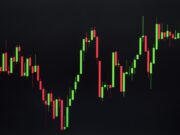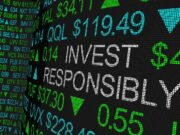Stocks plunged this morning, erasing the gains from the previous session as investors process the most significant Fed rate hike since 1994. As widely anticipated, the Fed Policy meeting that concluded yesterday resulted in a 75 basis point rate increase. Fed Chair Jerome Powell said a 50 or 75 basis point increase “seems most likely” at the next meeting in July.
Many of the pros on Wall Street expect a bumpy road ahead for stocks as the Fed ramps up its inflation-fighting strategy, presenting an especially attractive opportunity for active investors. Today we’ll discuss a short-term play that allows shareholders to benefit from market backsliding. While stocks are down 8% this week, our pick for today has gained 7.56%. This valuable tactic can be used as a hedge and to generate quick profit when things take a turn.
Traders who are looking to benefit from sliding stocks often turn to short-selling. The main risk of traditional short-selling is that while profit is capped (a stock can only fall to zero), the risk is theoretically unlimited. Of course, other tactics can be used to cover a position at any time, but with a short-selling position, inventors are at risk of receiving margin calls on their trading account if their short position moves against them.
Inverse or “short” ETFs are another option that allows you to profit when a particular investment class declines in value. Some investors use inverse ETFs to profit from market declines, while others use them to hedge their portfolios against falling prices.
Over short periods, you can expect that the inverse ETF will perform “the opposite” of the index over short periods, but a disconnect may develop over more extended periods. Inverse ETFs will decline as an asset appreciates over time. For that reason, inverse ETFs typically are not seen as good long-term investments. Furthermore, frequent trading often increases fund expenses, and some inverse ETFs have expense ratios of 1% or more.
When approached correctly, inverse ETFs can be excellent day-trading candidates and highly effective short-term hedging tools. There are several inverse ETFs that can be used to profit from declines in broad market indexes, such as the Russell 2000 or the Nasdaq 100. Also, there are inverse ETFs that focus on specific sectors, such as financials, energy, or consumer staples.
With $4 billion in assets, the ProShares Short S&P 500 (SH) is the largest inverse fund by value. Commonly used by investors as a hedging vehicle, the fund strives to deliver the inverse performance of the S&P 500 (SPX). If you’re concerned about the stock market falling, this fund that moves in the opposite direction of the largest 500 U.S. corporations is the simplest way to protect yourself.
It’s important to note that SH is designed to deliver inverse results over a single trading session, with exposure resetting monthly. Investors considering this ETF should understand how that nuance impacts the risk/return profile and realize the potential for “return erosion” in volatile markets. SH should definitely not be found in a long-term, buy-and-hold portfolio. The fund comes along with an expense ratio of 0.9%.
Should you invest in SH right now?
Before you consider buying SH, you'll want to see this.
Investing legend, Keith Kohl just revealed his #1 stock for 2022...
And it's not SH.
Jeff Bezos, Peter Thiel, and the Rockefellers are betting a colossal nine figures on this tiny company that trades publicly for $5.
Keith say’s he thinks investors will be able to turn a small $50 stake into $150,000.
Find that to be extraordinary?
Click here to watch his presentation, and decide for yourself...
But you have to act now, because a catalyst coming in a few weeks is set to take this company mainstream... And by then, it could be too late.
Click here to find out the name and ticker of Keith's #1 pick...







